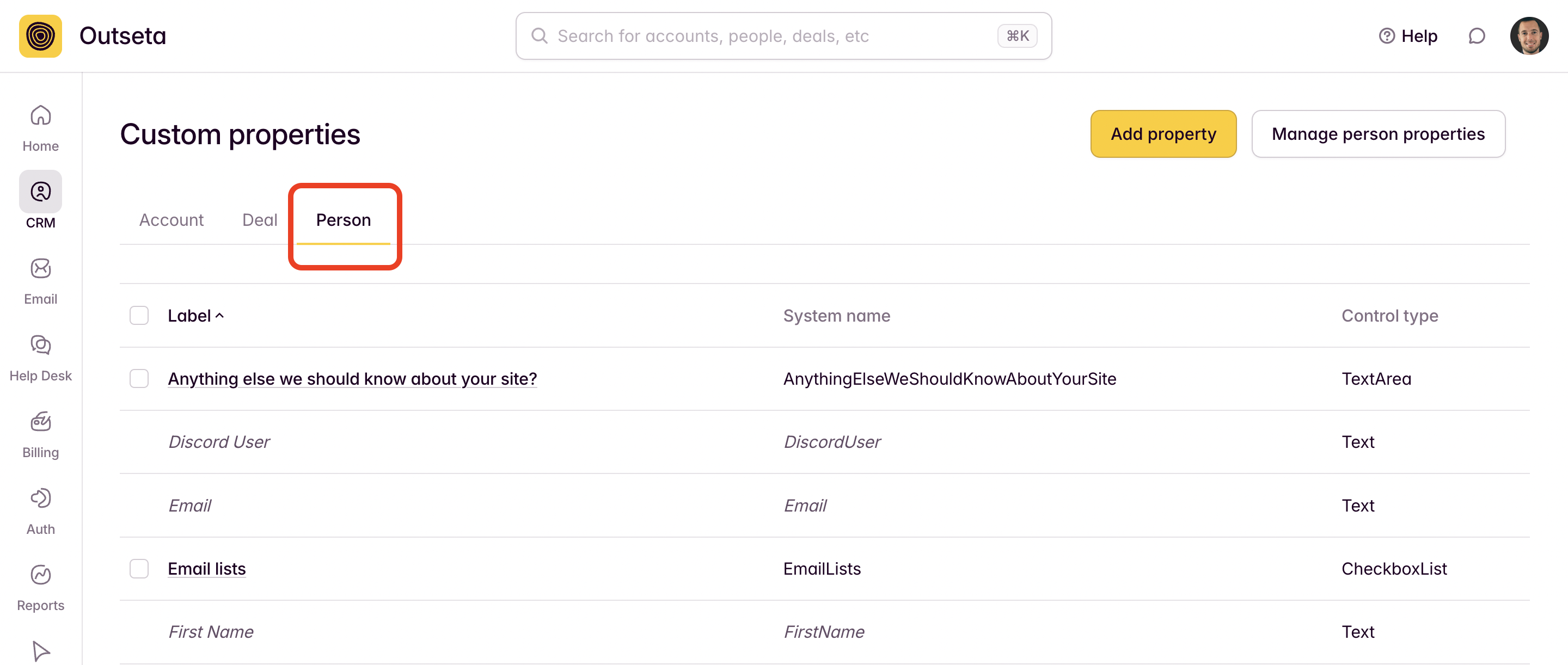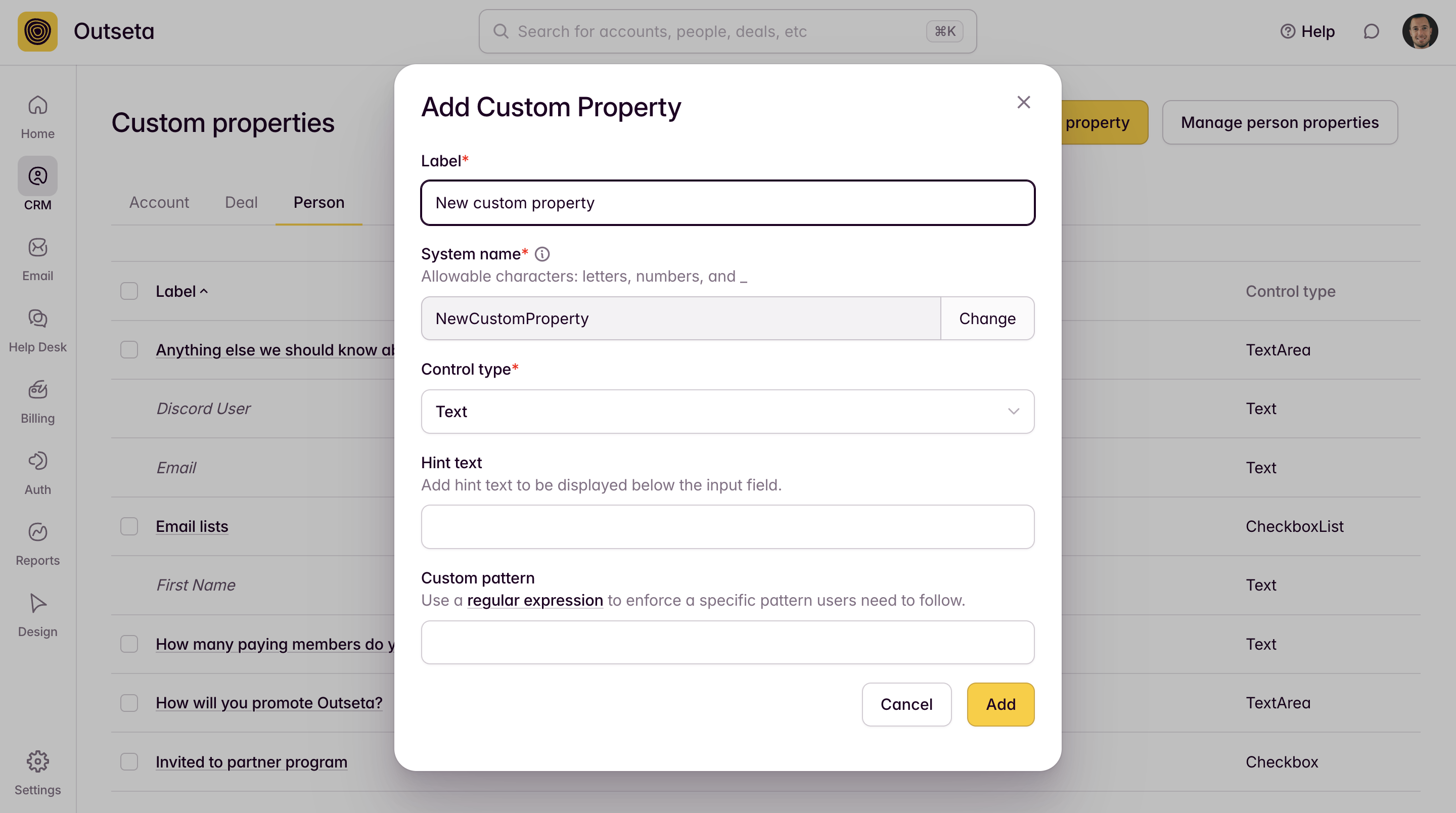If you want to store data in Outseta and there's not a default property already, you must first create a custom property—this gives us a place to store the data going forward.
Custom properties are added directly to your Person, Account, or Deal records in Outseta.
To create a custom property, follow the steps below.
1. Click CRM > CUSTOM PROPERTIES from the left hand navigation.
2. Click either ACCOUNT, DEAL, or PERSON depending on whether you want the custom property to be associated with People, Deal, or Accounts records. In this example we'll set up a custom property on a PERSON record.

3. Click PERSON and then ADD PROPERTY.
4. Enter a name for your custom property in the LABEL field. In this case we've entered "New custom property." A system name will be set for the custom property by default.

5. Select a CONTROL TYPE—you can choose from checkbox, checkbox list, number, radio list, select, text, text area, or date. In this case we've selected "Text."
6. Click ADD. That's it! You now have a text field on all your PERSON records called "New custom property."
Custom Property Types and Formatting When Working With Zapier
Data submitted to Outseta by Zapier ends up in JSON format—this is the resulting format when a Javascript Object is converted to text. Below you'll find the correct format to use in your Zaps based on each of the different types of custom properties Outseta supports, as well as some guidance on when to use each property type.
Checkbox
A checkbox property is a single checkbox that can be either checked or unchecked. It should have the value True (checked) or False (unchecked).
Checkbox List
A checkbox list property allows users to choose multiple items in list of options. The items selected should be in the format or the example below.
Example: ["Checkbox item 1", "Checkbox list item 2"]
Radio List
A radio list property allows the user to pick only one item from a list. The selected item should not have any formatting.
Example: Radio List Item 1
Number
A number property is simply looking for a number. It should have a value that's simply a number without any formatting.
Example: 4
Select
A select property allows users to select a single value from a drop down list of values. The selected item should not have any formatting.
Example: Select Item 1
Text
A text property is simply a string of text. I should have no formatting.
Example: This is some text
Text Area
A text area is simply a larger field used for blocks or paragraphs of text. It should have no formatting.
Example: This is a text area example. If you have a fairy long bit of text, maybe a few sentences or a few paragraphs, you should consider using a text area in instead of a text field.
Date
A date property is used to for dates! The resulting format is shown in the example below.
Example: 5/15/22
